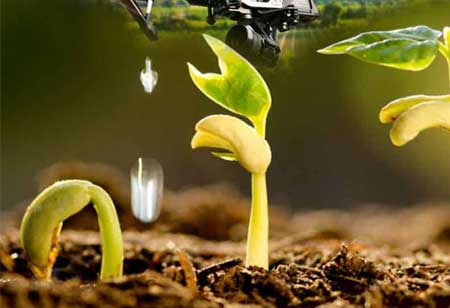Thank you for Subscribing to Agri Business Review Weekly Brief
Importance Of Drones In The Agricultural Revolution
Agricultural drones proceed to show the appeal that has caused their continued adoption, reducing costs while guiding farmers in efficiently cultivating the food they require.

By
Agri Business Review | Monday, November 28, 2022
Stay ahead of the industry with exclusive feature stories on the top companies, expert insights and the latest news delivered straight to your inbox. Subscribe today.
Agricultural drones proceed to show the appeal that has caused their continued adoption, reducing costs while guiding farmers in efficiently cultivating the food they require.
Fremont, CA: Today's farming reality incorporates high costs, limited scale, and the necessity to obtain the best harvest at the early phase of the spring calendar. Only by employing cutting-edge technology can good results that advantage everyone be accomplished.
Agricultural Management Platforms, GPS and Mapping Services, Supply Chain and Inventory Management Solutions, Agriculture Monitoring Services, and Micro Agriculture Solutions include the agtech market.
Drones Playing a Major Role in Agriculture
An orthomosaic can be created by surveying the field and taking over 400 pictures with the drone's high-quality camera. A plan like this enables agronomists to see the land differently. It also turns out that gaining access to information unavailable on the ground is feasible.
The topography and state of the plants in the field can then be identified through algorithms by agriculturists. Because of Unmanned Technology, agronomists can learn where irrigation is required, which plants are sick, and so on.
Multispectral photography is another agricultural technological breakthrough. Various color stripes are obtained by the business analysis service, which can be grabbed by a multispectral camera and read by algorithms. This design allows different soil nutrition levels to be evaluated and intervened on as required to control waste and create a more sustainable environment.
Technological Whereabouts
Drones are technological marvels for observing, depositing, and saving money for farmers. This, nevertheless, is not a simple solution for all farmers. However, based on a recent study, digitizing data-gathering processes in the fields will be the main to the next agricultural revolution. Still, this will take time because most farmers and agronomists still gather data on paper.
Key Characteristics of Drones in the Agricultural Sector
Drones utilized to irrigate fields presently are impressive: one option has an extent of about six feet and takes a four-gallon tank containing fertilizers, herbicides, pesticides, and fungicides, based on the needs of each specific deployment.
Agricultural drones proceed to show the appeal that has caused their continued adoption, reducing costs while guiding farmers in efficiently cultivating the food they require.





